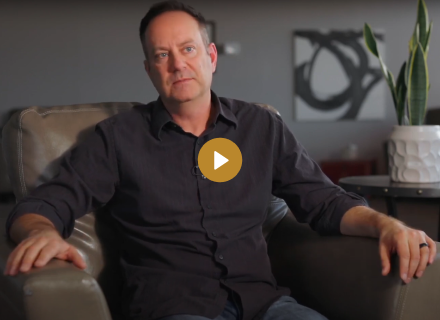By Floyd Godfrey, PhD
For many men facing the challenges of pornography addiction, understanding the concept of triggers—both internal and external—can be transformative. Triggers are stimuli that provoke urges to engage in addictive behaviors, often bypassing conscious control. Identifying and addressing these triggers is a vital step in recovery, as it empowers individuals to develop healthier responses and regain control over their actions. This article explores the differences between internal and external triggers and provides insights on managing them effectively.
What Are Internal Triggers?
Internal triggers are responses rooted within our emotional or physical states. As Rob Weiss and David Sack explain, “Internal triggers typically involve emotional (or sometimes physical) discomfort of any kind - depression, shame, anxiety, anger, fear, guilt, remorse, boredom, etc.” (Weiss & Sack, 2015, p. 39). In other words, these triggers arise from within, often linked to unresolved feelings, unmet needs, or personal insecurities. For example, when a person feels lonely or anxious, they may turn to pornography as a means of distraction or temporary relief.
Some of the most common internal triggers for pornography use include:
- Emotional distress such as depression or anxiety, which can lead individuals to seek comfort through familiar, soothing behaviors.
- Unmet needs for validation and affection, which can create a longing that some attempt to satisfy through sexual imagery.
- Boredom or loneliness, which often drive people to look for quick ways to escape discomfort and fill their time.
These internal triggers tend to be persistent because they are tied to core needs and unresolved emotional experiences. For lasting recovery, it is essential to address these underlying issues through therapy, self-reflection, and support networks that foster a sense of connection, acceptance, and purpose.
Understanding External Triggers
Unlike internal triggers, external triggers are linked to outside influences. According to Weiss and Sack, “External triggers can be people, places, things, and/or events” (Weiss & Sack, 2015, p. 39). These are the sights, sounds, and situations encountered in daily life that prompt addictive urges. For example, seeing a particular image or passing by a certain location associated with past behaviors can serve as a trigger. A simple stressful day or an argument might create enough frustration to trigger someone’s addictive response if they are used to seeking relief in pornography.
Common external triggers might include:
- Media exposure that displays provocative images or situations that make someone more susceptible to urges.
- Social settings or people who encourage or engage in behavior that may trigger unwanted thoughts or memories.
- Routine patterns or physical spaces associated with past viewing habits, like a specific room or time of day, which may subtly influence behavior.
Identifying these external triggers and recognizing their impact can help individuals make adjustments, such as altering routines, setting up blocking software, or seeking accountability in specific environments.
Managing Triggers: Practical Strategies for Recovery
Addressing internal and external triggers involves a blend of self-awareness, accountability, and therapeutic support. One effective approach is practicing mindfulness to become more aware of triggers and understand their influence without reacting impulsively. When a person can identify an emotion like anger or loneliness as it arises, they gain an opportunity to respond differently, perhaps by talking to a friend, journaling, or engaging in physical activity.
Developing a support network is also crucial. Sharing struggles with others provides validation and support, which can help satisfy the need for connection, reducing the power of internal triggers like loneliness or shame. Similarly, working with a coach or therapist allows individuals to safely unpack and process unresolved emotions that fuel addictive behaviors.
Finally, setting up external safeguards—such as limiting media exposure, avoiding triggering environments, or creating structured routines—can reduce exposure to external triggers. Accountability tools, such as software that blocks inappropriate content or setting regular check-ins with a trusted friend, can also serve as effective external support mechanisms.
Embracing the Path Forward
While the journey of overcoming pornography addiction can be challenging, understanding internal and external triggers offers a pathway toward freedom. Through compassion, self-awareness, and proactive support, it is possible to change old patterns and reclaim control over one's life. Each step, no matter how small, represents progress toward healthier coping mechanisms and a more fulfilling life.
Floyd Godfrey, PhD is a Clinical Sexologist and a Certified Sex Addiction Specialist. He has been guiding clients since 2000 and currently speaks and provides consulting and mental health coaching across the globe. To learn more about Floyd Godfrey, PhD please visit his website: www.FloydGodfrey.com.
References
Weiss, R., & Sack, D. (2015). Sex addiction 101: A basic guide to healing from sex, porn, and love addiction. Health Communications, Inc.



